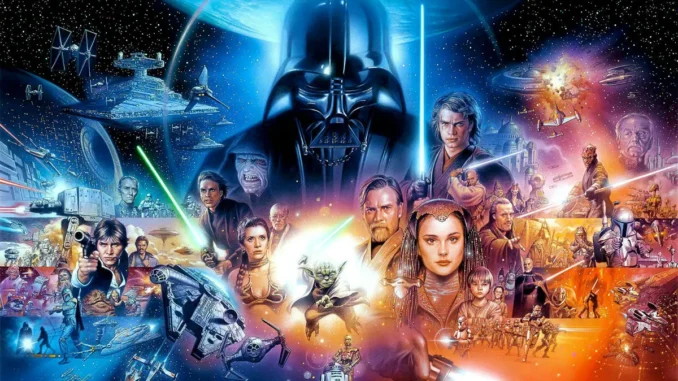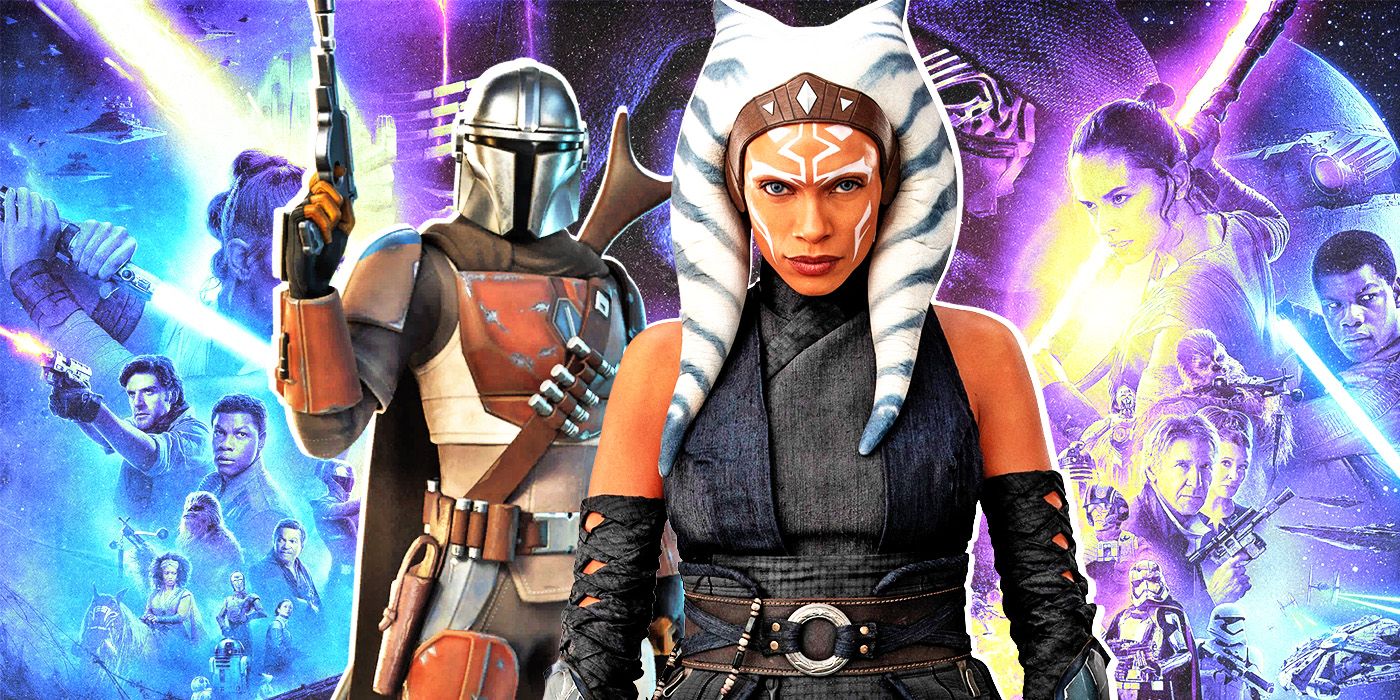
Can Ahsoka and The Mandalorian Fix the Star Wars Sequels’ Biggest Mistake?
Star Wars fans have many strong feelings about the sequel trilogy of films beginning with Star Wars: The Force Awakens and ending with Star Wars: The Rise of Skywalker. There is no accounting for expectations of the larger saga and audiences’ personal affection for their predecessors. Still, there are elements of the narrative that feel overlooked rather than simply dangling threads waiting to be pulled in a future story. Perhaps the most glaring mistake made by the Star Wars sequel trilogy was the lack of focus on politics. J.J. Abrams and Rian Johnson kept the focus of their stories strictly on the characters by placing them in a familiar struggle. The political conflict is, effectively, the same as it was in George Lucas’ initial trilogy.

However, as he was introducing the galaxy far, far away, creator’s privilege allowed for basic anti-authoritarianism. The biggest responsibility for Star Wars storytellers who follow him is successfully combining the philosophical allegory of the Force with a relevant, real-world political allegory. No small task. Newly promoted Chief Creative Officer Dave Filoni achieved that narrative alchemy with Star Wars Rebels during the production of the third-wave films. Of course, he had anywhere from seven to 11 hours to tell his story. By insisting the sequel films be a trilogy, the movies didn’t have enough room to effectively establish the new political status quo. Thankfully, series like Ahsoka and The Mandalorian can correct that “mistake” the way Star Wars: The Clone Wars brought layers of subtext to Lucas’s prequel films.
The Star Wars Sequel Trilogy Kept the Political Conflict Too Simple
The decision to keep the battle between the Resistance and the First Order equal parts vague and personal came with a significant downside. It reinforces the criticism that the sequel trilogy is an empty retread of the original trilogy. There is a valuable and moving generational story in there, specifically how each previous generation ultimately fails the next one. The political argument made by the sequel trilogy is, in fact, relevant. A new authoritarian force always rises, and its despotic leader may seem different than the last one, but he’s not.
In the original movies, the Emperor was characterized by his Empire. Supreme Leader Snoke’s characterization came in relationship to his subordinates. The influence of the First Order on the galaxy-at-large was left mostly vague. They were heavily present on Kijimi but nowhere to be found on Canto Bight. Seemingly, Maz Kanata’s castle survived the Galactic Civil War, but the First Order was brazen enough to attack it. They destroyed the entire seat of the New Republic, but only to facilitate a situation where the central heroes were more alone than ever before.
In this way, the sequel trilogy is more like the prequels because it depicts a change in government. Order 66 happens in the second act of the first movie, but in this case, the audience has no sense of what the New Republic was. The characters stuck to the fringes of their influence. The authoritarians come back, as they always do, but the complacency of the New Republic was left to the opening crawl. Fans are looking for the Disney+ series to provide clues about Palpatine’s cloning operation, but all the important things are happening in the New Republic.
Politics Hurt the Sequel Trilogy, but Not In the Way Fans Think
In 2023, Disney’s CEO Bob Iger blamed stories having morals for Disney’s recent financial woes. Despite box office fatigue likely being economically driven, he said movies should “entertain first” and they are “not about messages,” at a summit, according to CNBC. If anything, the Star Wars sequels had too few messages of the type that form the foundation of the previous two trilogies. The larger conflict was left so abstract that the climactic “People’s Fleet” moment could feel confusing or too convenient. Yet, Ahsoka just told a story that helps contextualize what may have been going on off-screen during the sequel era.
While Ahsoka Tano and Sabine Wren were zipping off to new galaxies, Hera Syndulla was back at the New Republic warning of a rising authoritarian threat. The leaders in control of her forces were hesitant and dismissive of her warnings. They saw the remnant forces in control of Imperial matériel as a disparate collection of “warlords.” Beyond that, they didn’t seem all that concerned with liberating the people suffering under their rule. Audiences knew these Imperial remnants were the spark that lit the fire that blew the Hosnian System away.
